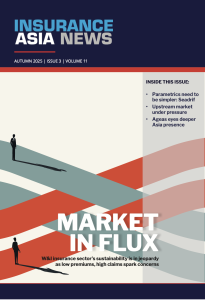Asia’s prices increase at highest pace in 5 years: Marsh
November 12 2019 by Andrew Tjaardstra-
Sri Lanka flood claims manageable for insurers, reinsurers to absorb non-motor losses: Fitch
- December 18
National Insurance Trust Fund, as Sri Lanka's sole reinsurer, faces greater exposure amid lack of retrocession cover from recent flooding due to Cyclone Ditwah.
-
Sri Lanka flood claims manageable for insurers, reinsurers to absorb non-motor losses: Fitch
- December 18
National Insurance Trust Fund, as Sri Lanka's sole reinsurer, faces greater exposure amid lack of retrocession cover from recent flooding due to Cyclone Ditwah.
-
Nat cat insured losses reach US$107bn, driven by LA wildfires and severe convective storms
- December 16
With losses at US$89bn, the US is again the most affected market in 2025, Swiss Re Institute says.
-
East Coast hailstorms to costs insurers US$736m: Perils
- December 15
Figure covers property and motor hull lines of business collected from the majority of affected insurance firms for the hailstorms in Queensland, New South Wales and Victoria between October 26 and November 1.
-
QBE | Elevating customer experience, humanising claims: QBE Asia’s ‘Solutions in a Box’
Vastly improving turnaround times and personalising service delivery, QBE Asia’s award-winning, end-to-end bundled claims solutions is a game-changer for the insurance industry.
-
Beazley | What does cyber protection look like from day 1 to day 600 and beyond?
Cybersecurity is no longer just an IT concern, but a governance issue that belongs on the boardroom agenda.
-
Sedgwick | Preparing for the next storm
Insurance industry needs to recalibrate, invest in innovation and strengthen systems, talent and data practices.
-
Peak Re | From climate modelling to market opportunity: Forging a new clarity on Southeast Asia’s climate risk
Southeast Asia's protection gap: a crisis of clarity, not just capital


